Nestled in the heart of the Himalayas, Bhutan stands as a testament to the harmonious blend of ancient tradition and natural beauty, making it a haven for travelers seeking an off-the-beaten-path destination. This mystical kingdom, with its unspoiled landscapes and majestic fortresses, offers a plethora of hidden gems waiting to be discovered. From serene monasteries perched atop rugged cliffs to verdant valleys teeming with diverse flora and fauna, Bhutan invites adventurers and peace-seekers alike to explore its rich cultural heritage and breathtaking natural wonders. Whether you're an avid trekker, a culture enthusiast, or simply in search of tranquility, Bhutan's lesser-known locales promise an unforgettable journey into the heart of the Himalayas.
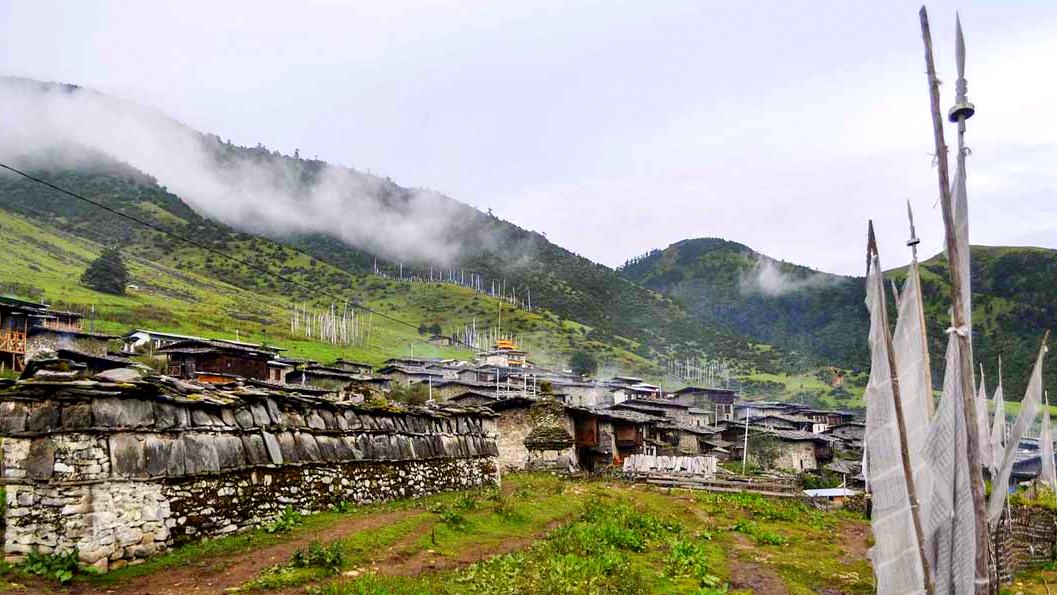
At Druk Holidays, we specialize in uncovering Bhutan's hidden gems and guiding you through some of the most breathtaking off-the-beaten-path destinations the country has to offer. Our deep understanding of Bhutan's rich culture and pristine natural landscapes allows us to create unforgettable journeys that go beyond the usual tourist spots. Whether you're looking to explore ancient monasteries tucked away in the mountains, vibrant local markets, or serene nature trails, Druk Holidays is your trusted companion in discovering the true essence of Bhutan. With us, you're not just visiting; you're experiencing the heart and soul of this magical kingdom.
Haa Valley
The Haa Valley, nestled in the northwestern part of Bhutan near the Indian border, is one of the country's most picturesque and enchanting destinations, yet remains relatively untouched by mass tourism. This secluded valley is characterized by its lush forests, vibrant traditional Bhutanese villages, and serene alpine meadows, offering a peaceful retreat into nature's embrace.
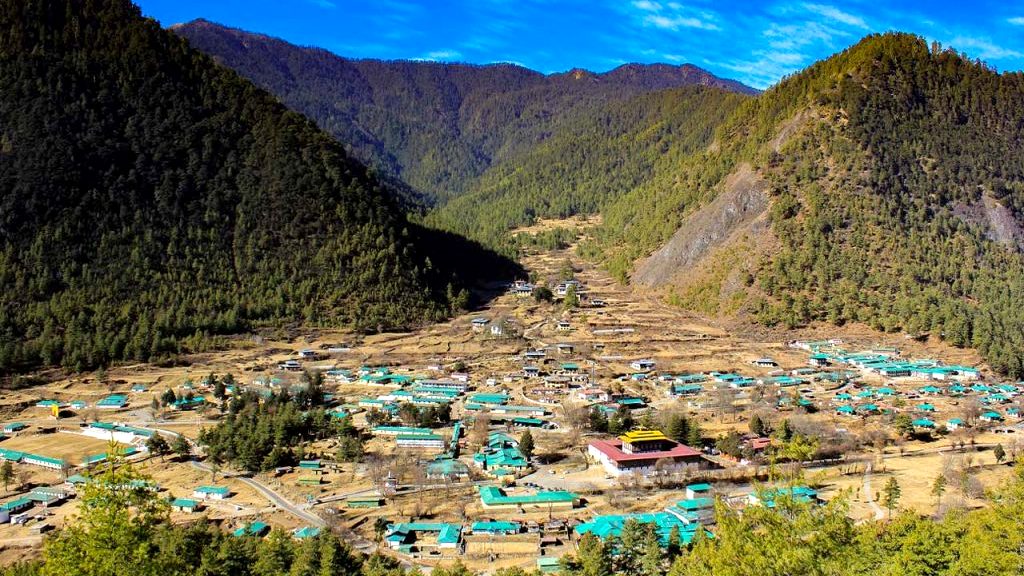
Haa Valley
Historical Significance: Haa Valley holds great cultural and historical significance to the Bhutanese people. It is dotted with ancient temples and fortresses (dzongs) that stand as a testament to the valley's rich heritage. The two most revered temples, Lhakhang Karpo (White Temple) and Lhakhang Nagpo (Black Temple), are situated here, believed to have been consecrated in the 7th century by the Tibetan king Songtsen Gampo.
Natural Beauty: The valley's breathtaking landscapes are a paradise for nature lovers and photographers alike. The Haa River running through the valley adds to its natural allure, with numerous hiking trails that lead visitors through dense pine forests, past quaint hamlets, and up to vantage points offering panoramic views of the majestic Himalayas.
Culture and Lifestyle: Visiting Haa Valley provides a unique opportunity to experience the traditional lifestyle of the Bhutanese people. The valley is home to the Haaps, an ethnic group known for their distinct traditions and practices. The annual Haa Summer Festival is a vibrant showcase of local culture, including traditional sports, folk dances, and a display of the region's unique cuisine.
Adventure and Activities: For the adventurous spirit, Haa Valley does not disappoint. It offers a range of activities from mountain biking and hiking to more leisurely pursuits like bird watching and meditation in the tranquil surroundings. The valley serves as a gateway to some of Bhutan's most challenging treks, including routes to Paro, Chhukha, and Samtse.
Tranquility and Solitude: One of the most compelling reasons to visit Haa Valley is its unparalleled tranquility. Away from the hustle and bustle of Bhutan's more frequented tourist spots, it offers a serene haven where one can truly disconnect and find peace amidst nature's wonders.
Sustainable Tourism: Bhutan's commitment to preserving its natural environment and cultural heritage is evident in Haa Valley. The area has seen a controlled approach to tourism, ensuring that visitors can enjoy its beauty without contributing to overcrowding and environmental degradation.
Haa Valley stands out as a hidden gem in Bhutan, offering a blend of natural beauty, rich culture, and spiritual serenity. It's a must-visit for anyone seeking an authentic experience away from the conventional tourist trails, promising memories that will last a lifetime.
Phobjikha Valley
Phobjikha Valley, also known as Gangtey Valley after the charming Gangtey Monastery located there, is a stunning glacial valley in central Bhutan. This valley is renowned for its breathtaking landscapes, rich biodiversity, and cultural significance, making it a captivating destination for visitors. Situated at an elevation of about 3,000 meters above sea level, Phobjikha is a bowl-shaped valley on the western slopes of the Black Mountains, offering a perfect blend of natural beauty and spiritual serenity.
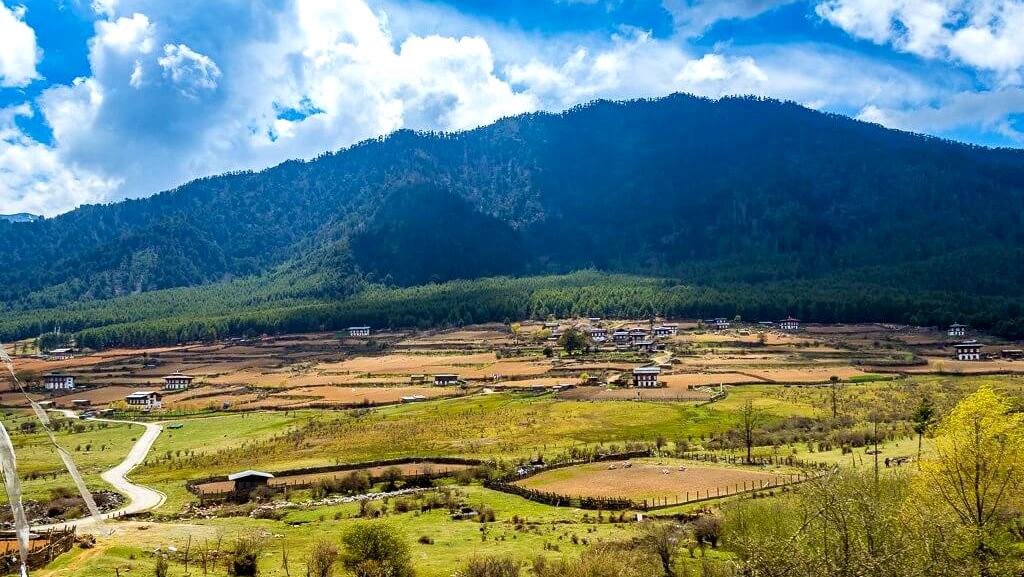
Natural Beauty and Wildlife: One of the most remarkable aspects of Phobjikha Valley is its status as a winter home for the rare and beautiful black-necked cranes. These elegant birds migrate from the Tibetan Plateau to the valley every year in late autumn and stay until early spring, making the valley an important wildlife preserve. The arrival of the cranes is celebrated with the annual Black-Necked Crane Festival, held at the Gangtey Monastery, offering visitors a unique blend of cultural and natural experiences.
The valley is also known for its expansive wetlands, which are among the most significant and well-preserved in Bhutan. These wetlands are crucial for the survival of the black-necked cranes and other wildlife species, contributing to the valley's ecological importance.
Cultural Significance: The Gangtey Monastery, perched atop a hill overlooking the valley, is a prominent cultural landmark. This 17th-century monastery belongs to the Nyingmapa school of Buddhism and is the largest Nyingmapa monastery in western Bhutan. It is a center of spiritual life for the people living in Phobjikha Valley and attracts visitors with its stunning architecture and spiritual ambiance.
Hiking and Outdoor Activities: Phobjikha Valley offers numerous trails for hiking and nature walks, allowing visitors to immerse themselves in its serene landscapes. These trails wind through dense forests, past traditional Bhutanese farmhouses, and into the open spaces of the valley, providing stunning views of the surrounding mountains and the opportunity to witness the cranes up close during their migratory season.
Sustainable Tourism: The conservation efforts in Phobjikha Valley are a testament to Bhutan's commitment to environmental protection and sustainable tourism. Efforts to preserve the natural habitat of the black-necked cranes and the traditional way of life of the local communities are evident. Visitors are encouraged to respect the ecological and cultural sensitivity of the valley, ensuring that tourism remains a positive force for conservation and community well-being.
Tranquility and Solitude: For those seeking tranquility and a break from the bustling world, Phobjikha Valley offers a peaceful retreat. The quiet beauty of the valley, combined with its spiritual and natural significance, makes it a perfect destination for reflection and rejuvenation.
Phobjikha Valley is not just a destination but an experience that embodies the essence of Bhutan's natural beauty and cultural heritage. Its untouched landscapes, rich wildlife, spiritual significance, and commitment to conservation make it a must-visit for anyone looking to explore the hidden gems of Bhutan.
Bumthang
Bumthang, often referred to as the spiritual heartland of Bhutan, is a region that encompasses four major valleys: Chokhor, Tang, Ura, and Chhume. Its significance, both historically and spiritually, makes it a focal point for those seeking to delve deeper into Bhutan's Buddhist culture and ancient traditions. Bumthang is renowned for its stunning landscapes, dotted with sacred sites, ancient temples, and monasteries, offering a profound glimpse into the essence of Bhutanese spirituality and heritage.
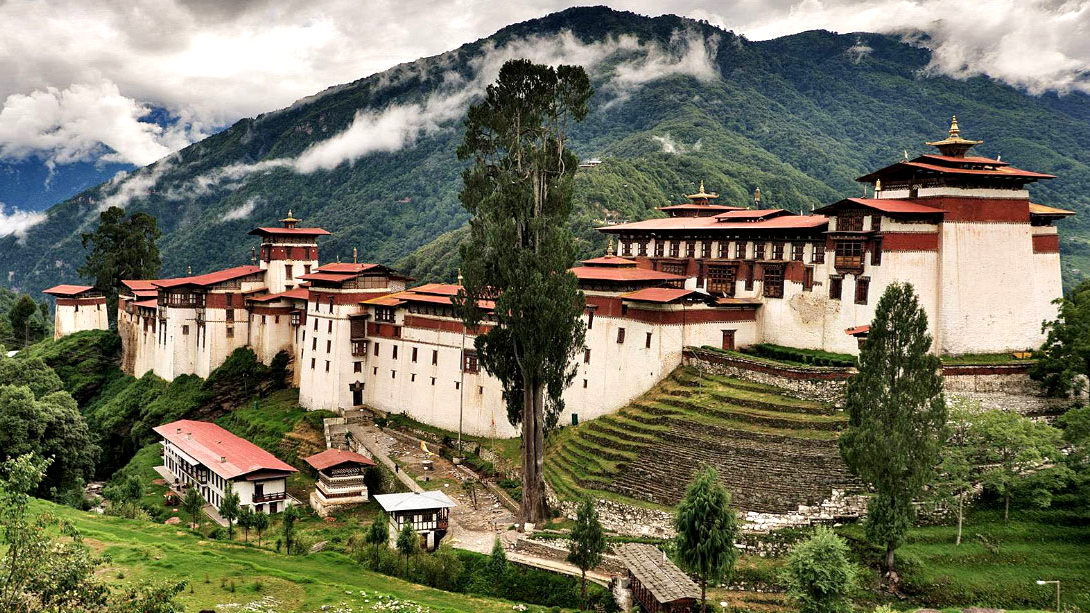
Spiritual and Historical Significance: Bumthang is steeped in myth and legend, with numerous sites tied to Guru Rinpoche (Padmasambhava), who introduced Buddhism to Bhutan in the 8th century. The Jambay Lhakhang, one of the oldest temples in the kingdom, is said to be one of 108 temples built by Tibetan King Songtsen Gampo in a single day to subdue a demoness. Kurjey Lhakhang, another iconic temple complex in Bumthang, is where Guru Rinpoche left his body imprint on a rock while meditating, further cementing the valley's spiritual allure.
Natural Beauty: Bumthang's valleys are characterized by their breathtaking natural beauty, with serene rivers, lush forests, and expansive meadows. The region's elevation varies, offering a diverse range of landscapes that are as enchanting as they are tranquil. Trekking through Bumthang provides not just an exploration of its natural wonders but also a journey through a living museum of Bhutanese culture and history.
Cultural Festivals: The valleys of Bumthang host several vibrant festivals (Tshechus) that are significant to Bhutanese cultural and spiritual life. These festivals are marked by colorful masked dances, religious processions, and rituals that are believed to confer merit on participants and spectators alike. The most famous of these is the Jambay Lhakhang Drup, which features the sacred naked dance performed at midnight, a unique spiritual spectacle.
Artisanal Tradition and Local Cuisine: Bumthang is also known for its artisanal traditions, particularly its weaving and dairy products. The Bumthang valley produces distinctive woolen textiles known as Yathra, characterized by their vibrant patterns and colors. Visitors can explore local workshops to witness the skillful art of Bhutanese weaving. The region's cheese and Red Panda beer, a local brewery product, offer a taste of Bumthang's unique flavors.
Tranquility and Reflection: The serene environment and spiritual significance of Bumthang offer a perfect retreat for meditation and reflection. The valley's numerous temples and monasteries serve as serene spots for those seeking spiritual solace or a deeper understanding of Buddhist teachings.
Bumthang stands out as a region that encapsulates the essence of Bhutan's spiritual and natural beauty. A visit to Bumthang is not just a journey through the stunning landscapes of Bhutan but also a profound exploration of the kingdom's heart and soul, offering insights into its rich culture, history, and spiritual practices.
Lhuentse
Lhuentse, located in the northeastern corner of Bhutan, is often considered one of the most isolated yet profoundly beautiful regions in the country. Known for its rugged landscapes, ancient heritage, and significant spiritual sites, Lhuentse is the ancestral home of Bhutan's royal family. This region offers a unique glimpse into the deeply ingrained traditions and the untouched beauty of Bhutanese life, making it a captivating destination for those looking to explore the less-trodden paths.
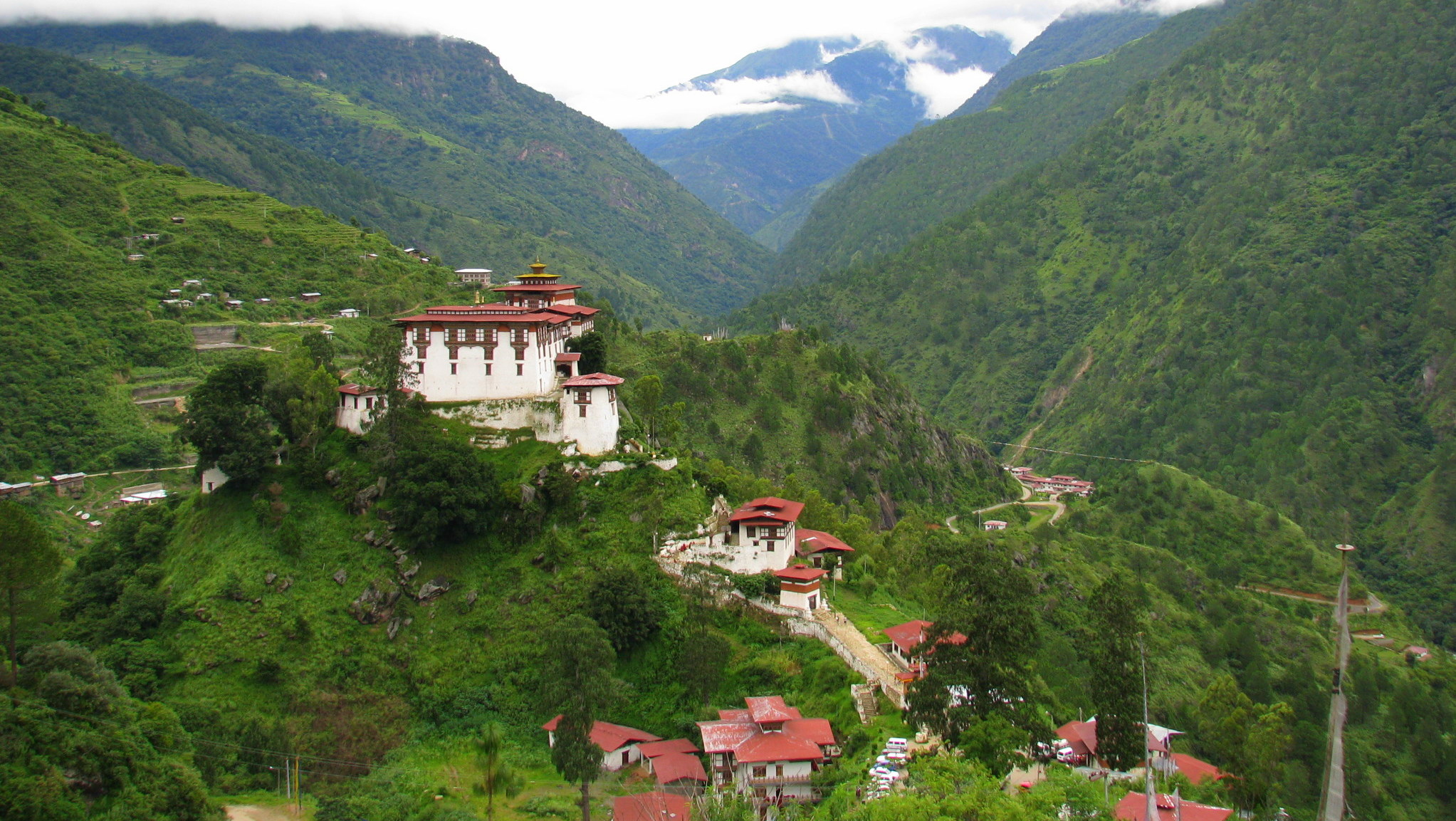
Spiritual Significance: Lhuentse is renowned for its sacred sites and monasteries, many of which are perched precariously on cliffsides or nestled in serene valleys. Among these, the most notable is the Lhuentse Dzong, a majestic fortress that serves as both a monastic and administrative center. This Dzong, with its intricate architecture and commanding presence, overlooks the Kuri Chhu River, offering stunning views of the surrounding valleys.
Weaving Tradition: Lhuentse is celebrated for its weaving traditions, particularly the art of making Kishuthara, an intricately patterned silk textile that is highly prized throughout Bhutan. The women of Lhuentse, particularly in the village of Khoma, are master weavers, and their skills have been passed down through generations. Visiting Lhuentse provides a unique opportunity to observe these artisans at work, creating beautiful textiles that embody the rich cultural heritage of Bhutan.
Natural Beauty: The landscape of Lhuentse is characterized by its steep mountains, verdant forests, and cascading rivers, making it a haven for trekkers and nature lovers. The region's remote location contributes to its pristine environment, offering breathtaking vistas and a peaceful retreat from the modern world. Trekking in Lhuentse reveals hidden waterfalls, secluded villages, and panoramic views of the Eastern Himalayas.
Cultural Exploration: Lhuentse is a treasure trove of Bhutanese culture and history. The region's numerous ancient temples and sacred sites are alive with stories of saints and legends. Exploring these sites offers insights into the spiritual practices and historical events that have shaped the region. The annual festivals in Lhuentse, including the unique Tshechu held at Lhuentse Dzong, provide a colorful spectacle of dances, music, and religious ceremonies, drawing both locals and visitors into a vibrant celebration of Bhutanese tradition.
Solitude and Serenity: The remoteness of Lhuentse lends it an air of solitude and serenity that is increasingly rare in today's fast-paced world. Visitors to Lhuentse can immerse themselves in the tranquil beauty of the landscape, the warmth of its people, and the depth of its spiritual and cultural heritage. This region offers a profound experience for those seeking to connect with nature, explore ancient traditions, and find peace in the majestic beauty of Bhutan.
Lhuentse represents the essence of Bhutan's hidden beauty, offering a journey into a world where ancient traditions flourish amidst breathtaking natural landscapes. It is a destination that promises not just scenic beauty but a deeper understanding and appreciation of the cultural and spiritual wealth of Bhutan.
Merak and Sakteng
Merak and Sakteng, situated in the easternmost parts of Bhutan, represent two of the most intriguing and less explored regions in the country. These areas are distinguished by their unique cultural identity, largely due to the semi-nomadic lifestyle of the indigenous people known as the Brokpas. Living in one of Bhutan's most remote locations, the Brokpas have maintained a way of life that has remained largely unchanged for centuries, offering visitors a rare glimpse into traditional Bhutanese pastoral life.
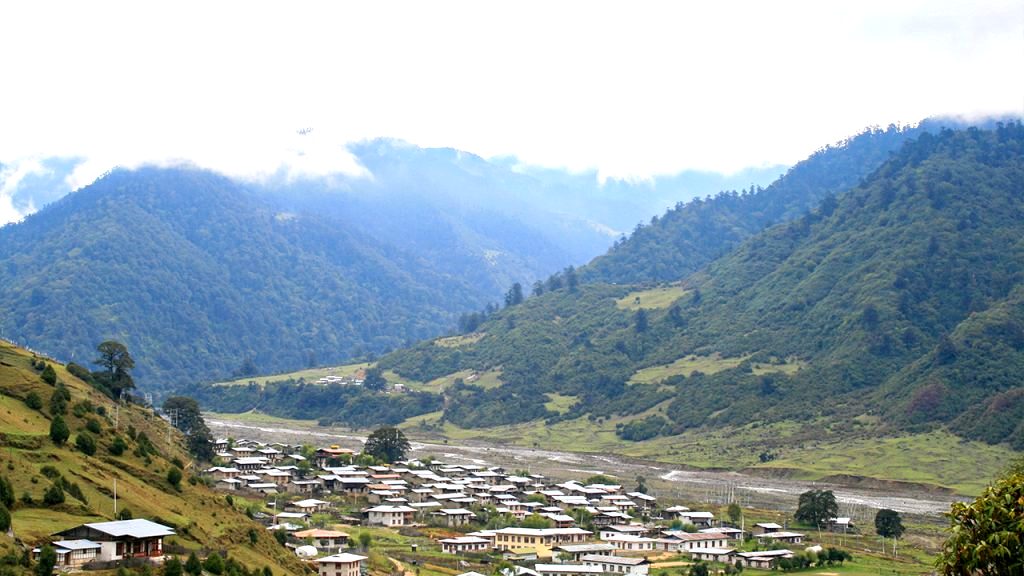
Unique Cultural Identity: The Brokpas of Merak and Sakteng are known for their distinctive clothing, including their colorful, hand-woven garments and unique yak hair hats designed to protect them from harsh weather. Their culture is deeply intertwined with yak herding, which is central to their livelihood and shapes much of their daily life and traditions.
Merak: Merak, situated at a high altitude, is a community largely isolated from the rest of Bhutan. The journey to Merak is an adventure in itself, involving treks through stunning landscapes of rhododendron forests, alpine meadows, and high mountain passes that offer panoramic views of the Himalayas. The village is characterized by its traditional stone houses, closely knit community, and a lifestyle that revolves around yak herding and subsistence farming. Visiting Merak allows for an authentic experience of Bhutan's rural culture, where ancient traditions are preserved and practiced with pride.
Sakteng: Sakteng, like Merak, is nestled in a picturesque valley and shares a similar cultural and economic lifestyle. It is renowned for the Sakteng Wildlife Sanctuary, a protected area established to conserve the unique flora and fauna of the region, including the mythical Migoi (yeti), which is said to inhabit the area according to local folklore. Sakteng offers a peaceful retreat into nature, with opportunities to engage with the local community, participate in traditional festivities, and explore the vibrant biodiversity of the sanctuary.
The Merak-Sakteng Trek: One of the best ways to experience the beauty and cultural richness of these regions is through the Merak-Sakteng trek. This trek takes adventurers through the heart of Brokpa territory, allowing for immersive experiences in their villages, interactions with the local people, and an appreciation of the rugged beauty of the eastern Bhutanese landscape. The trek is not just a physical journey but a cultural exploration, providing insights into the lives of one of Bhutan's most unique communities.
Conservation and Sustainable Tourism: Both Merak and Sakteng are examples of Bhutan's commitment to conservation and sustainable tourism. The Sakteng Wildlife Sanctuary is a testament to this, protecting not only the physical environment but also the cultural heritage of the Brokpas. Tourism in these areas is carefully managed to ensure that visitors have a minimal impact on the local way of life and the natural landscape.
Merak and Sakteng stand out as hidden gems within Bhutan, offering experiences that are both rare and profound. They present an opportunity to step back in time and witness a way of life that is closely connected to the rhythms of nature and ancient traditions. For the intrepid traveler seeking authenticity, adventure, and a deep connection with culture and nature, Merak and Sakteng are unparalleled destinations.
Gangtey Monastery
Gangtey Monastery, also known as Gangteng Gonpa or Gangtey Monastery, holds a revered place in the spiritual and cultural landscape of Bhutan. Located in the Phobjikha Valley, in the Wangdue Phodrang District, this Buddhist monastery is a significant center for the Nyingma school of Tibetan Buddhism and serves as the seat of the Pema Lingpa tradition. The monastery's serene location amidst the picturesque Phobjikha Valley, a wide glacial valley known for its stunning natural beauty and as the winter home of the endangered black-necked cranes, adds to its spiritual allure.
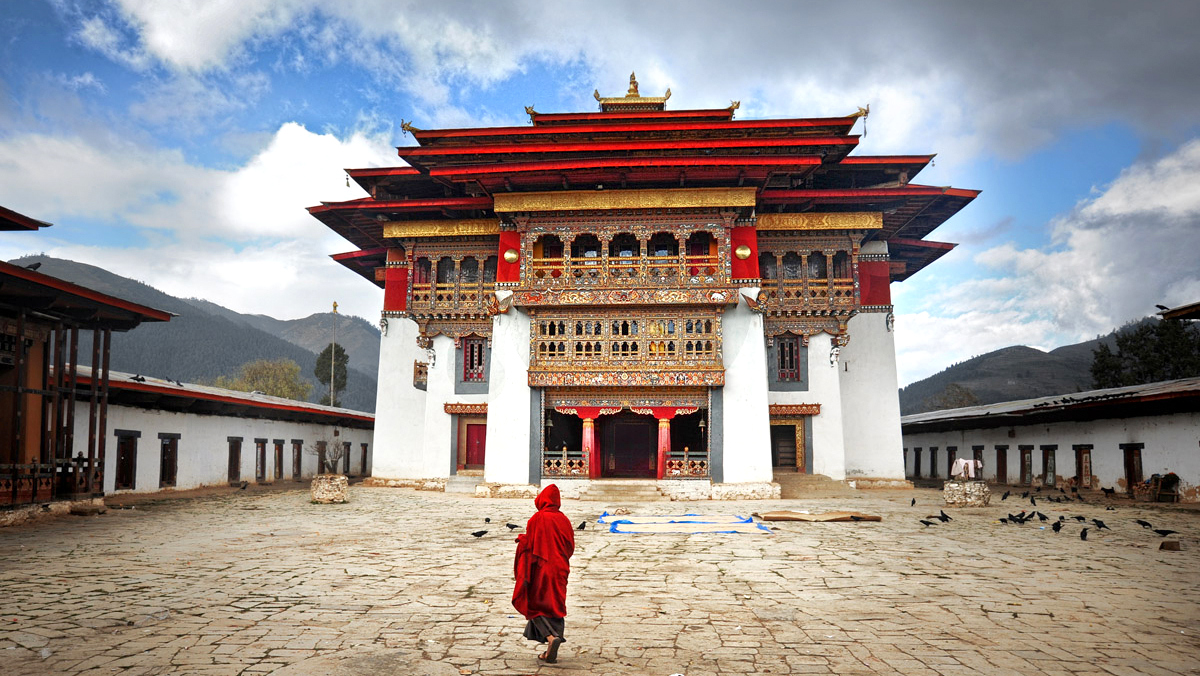
Gangtey Monastery
Historical Significance: Gangtey Monastery was founded in 1613 by Gyalse Pema Thinley, the grandson of the great Bhutanese treasure discoverer, Pema Lingpa. The lineage of Pema Lingpa is highly esteemed in Bhutan, with the monastery playing a crucial role in preserving and promoting the teachings and traditions of this lineage. The monastery has undergone several renovations and expansions over the centuries, with the most recent major restoration completed in the early 21st century, showcasing the community's dedication to preserving its sacred heritage.
Architectural Splendor: The monastery's architecture is a splendid example of traditional Bhutanese monastery construction, combining elements of Tibetan Buddhist style with indigenous Bhutanese craftsmanship. The complex comprises the main temple, surrounded by monk's quarters, meditation centers, and administrative buildings, all set against the backdrop of the majestic Himalayas. The intricate woodwork, vibrant murals, and elaborate statues within the temple reflect the rich artistic traditions of Bhutanese religious art.
Cultural and Spiritual Hub: Gangtey Monastery is not only a place of worship but also a center for education, cultural preservation, and spiritual practice. It houses a monastic school where young monks are educated in Buddhist philosophy, meditation, and the rituals of the Nyingma tradition. The monastery plays a central role in the spiritual life of the local community, hosting religious ceremonies, festivals, and rituals that draw visitors from across Bhutan and beyond.
The Black-Necked Crane Festival: One of the most enchanting events associated with the Gangtey Monastery is the annual Black-Necked Crane Festival. Held in the courtyard of the monastery, this festival celebrates the arrival of the black-necked cranes to the Phobjikha Valley for the winter. The cranes are deeply revered in Bhutanese culture, and seen as symbols of peace and longevity. The festival features cultural dances, songs, and performances by the local school children and monks, all aimed at raising awareness about the conservation of these majestic birds.
A Place of Peace and Natural Beauty: Visitors to Gangtey Monastery are often struck by the profound sense of peace and spiritual energy that pervades the site. The stunning natural beauty of the Phobjikha Valley, with its gentle slopes, pristine forests, and the graceful presence of the black-necked cranes, creates a perfect setting for meditation and reflection. The monastery offers a unique opportunity to experience the tranquility of Bhutanese monastic life, amidst one of the country's most breathtaking landscapes.
Gangtey Monastery stands as a beacon of Bhutanese spiritual and cultural heritage, offering visitors a glimpse into the deep-rooted traditions of Buddhism in Bhutan. Its historical significance, architectural beauty, and the natural splendor of its surroundings make it a must-visit destination for anyone seeking to explore the spiritual heart of Bhutan.
Jigme Dorji National Park
Jigme Dorji National Park, named in honor of the late Jigme Dorji Wangchuck, the Third King of Bhutan, is one of the country's most significant and largest protected areas. Encompassing a diverse range of ecosystems, from subtropical forests to alpine meadows, this national park is a treasure trove of biodiversity and natural beauty. It plays a crucial role in the conservation of several endangered species and offers visitors a unique opportunity to experience Bhutan's pristine wilderness.
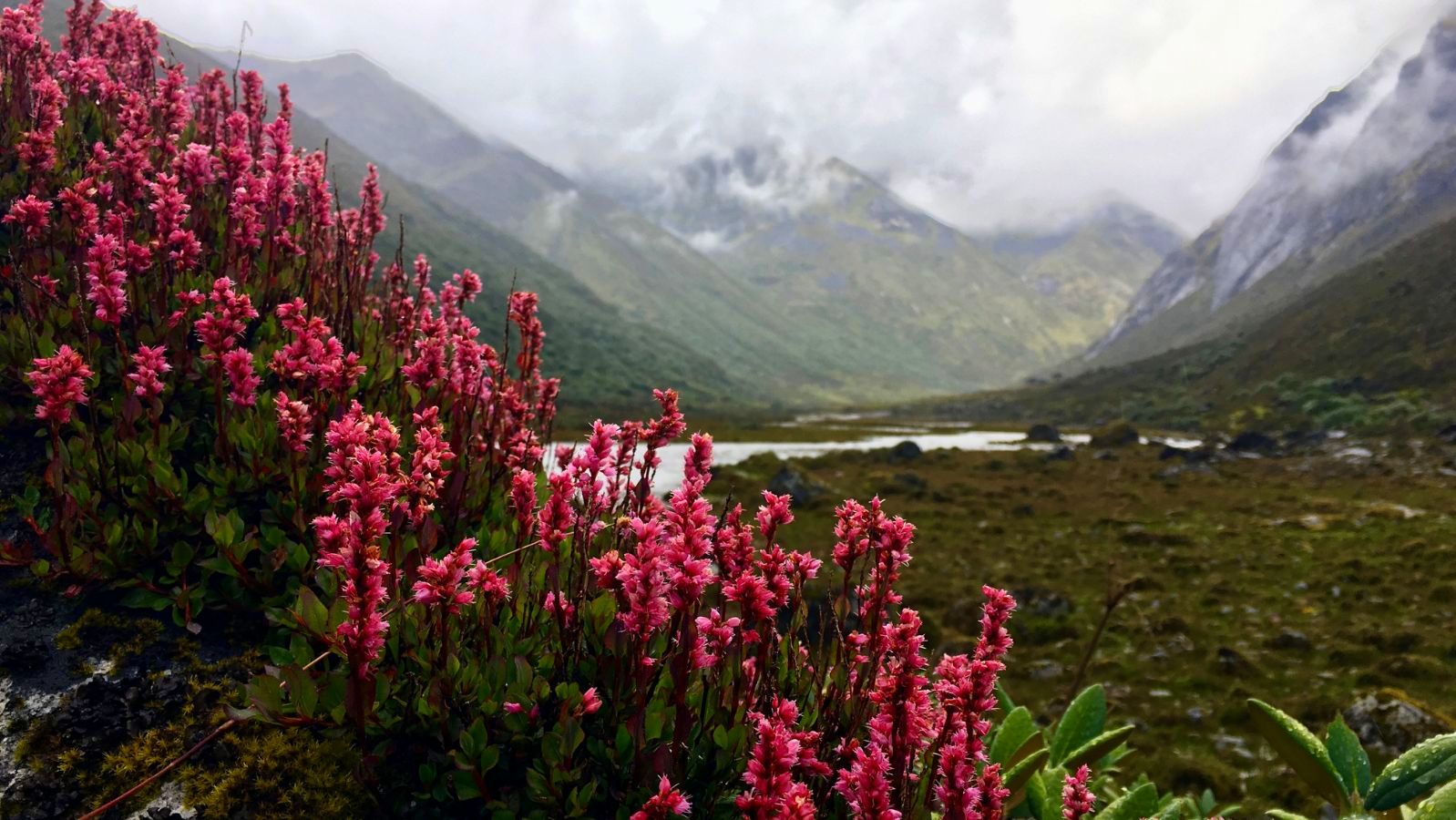
Biodiversity and Conservation: Jigme Dorji National Park is a sanctuary for an impressive array of flora and fauna, including several species that are globally endangered. It is home to the iconic snow leopard, the elusive Bengal tiger, the Himalayan black bear, the red panda, and the takin, Bhutan's national animal. The park's varied ecosystems support a rich diversity of plant life, with forests of rhododendron, oak, and coniferous trees, alongside vast expanses of alpine grasslands and meadows.
Cultural Significance: Beyond its natural wonders, the park also holds considerable cultural and spiritual significance. It encompasses several sacred sites, including Mount Jomolhari, revered as an abode of goddesses, and Gasa Hot Springs, a popular pilgrimage site with healing properties attributed to its mineral-rich waters. These sites offer insights into Bhutanese spiritual beliefs and the deep connection between the country's natural landscapes and its cultural identity.
Adventure and Exploration: Jigme Dorji National Park is a haven for adventure enthusiasts and nature lovers. Trekking routes such as the Jomolhari Trek and the Laya Gasa Trek pass through the park, offering challenging yet rewarding experiences with breathtaking views of the Himalayas, remote villages, and untouched natural beauty. The park's trails offer a chance to witness the rich wildlife and pristine ecosystems up close, providing an unforgettable wilderness experience.
Conservation Efforts: The park's management actively engages in conservation efforts, including habitat protection, anti-poaching initiatives, and community-based conservation programs. These efforts are crucial for maintaining the ecological balance and ensuring the survival of endangered species. The park also focuses on sustainable tourism practices, balancing visitor access with the preservation of its natural and cultural assets.
Visitor Experience: Visitors to Jigme Dorji National Park can expect a journey into the heart of Bhutan's wilderness, with opportunities to engage with local communities, participate in conservation activities, and explore the natural and cultural heritage of the area. The park's vast landscapes, ranging from dense forests to high mountain passes, offer a serene and profound connection to nature, showcasing the beauty and diversity of Bhutan's natural environment.
Jigme Dorji National Park is not just a destination for wildlife and adventure tourism; it is a vibrant testament to Bhutan's commitment to conservation, cultural preservation, and the sustainable coexistence of humans and nature. Whether you are trekking through its majestic landscapes, soaking in its hot springs, or exploring its sacred sites, a visit to Jigme Dorji National Park is an immersive experience into the heart of Bhutan's natural and cultural splendor.
East Bhutan
East Bhutan, often less traversed by the typical tourist routes, holds a charm and mystique that encapsulates the essence of Bhutan's deep-rooted traditions, untouched landscapes, and vibrant culture. This region of Bhutan is known for its rugged terrain, dense forests, and remote communities, offering a glimpse into the country's rich heritage and the simplicity of rural life. East Bhutan provides a unique opportunity to explore the country's unspoiled beauty and to experience the warmth and hospitality of its people.
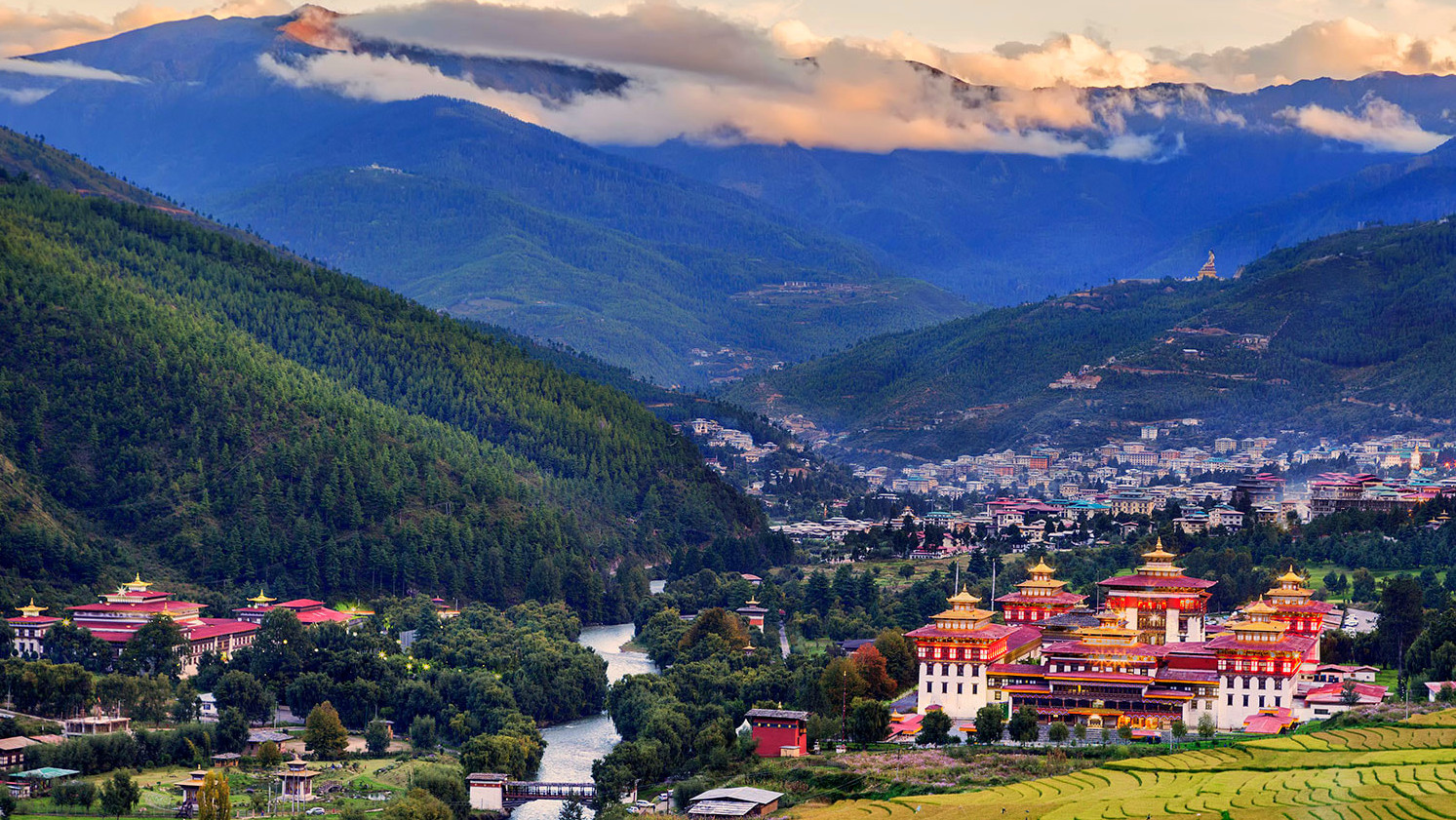
Unique Cultural Tapestry: The culture in East Bhutan is distinguished by its rich tapestry of traditions, languages, and festivals. Each district in the eastern region, such as Trashigang, Mongar, Lhuentse, and Trashiyangtse, has its unique customs and festivals, which are celebrated with much fervor and enthusiasm. The people of East Bhutan are known for their skilled craftsmanship, particularly in weaving. The region produces some of the most exquisite textiles in the country, with intricate designs and vibrant colors that reflect the local heritage and natural beauty.
Pristine Natural Landscapes: East Bhutan is blessed with some of the most pristine and scenic landscapes in the country. The region is characterized by its lush forests, steep mountains, and winding rivers. The remote valleys and villages are accessible through winding roads that offer breathtaking views of the Himalayan landscape. This untouched natural beauty provides a haven for a wide variety of flora and fauna, making it a perfect destination for nature lovers and adventurers.
Spiritual Sites and Monasteries: The eastern region is dotted with ancient monasteries and spiritual sites that are deeply ingrained in the Bhutanese way of life. One notable example is the Gom Kora temple in Trashigang, a sacred site associated with Guru Rinpoche, who is said to have meditated there. These spiritual sites are not only places of worship but also serve as centers for learning and community gatherings, preserving the spiritual heritage of Bhutan.
Adventure and Trekking: For those seeking adventure, East Bhutan offers numerous trekking and hiking opportunities. The region's rugged terrain and remote trails provide an ideal setting for treks that range from moderate to challenging. Exploring these trails offers an intimate experience with the region's natural beauty, wildlife, and remote villages, providing insights into the traditional lifestyles of the eastern Bhutanese people.
Sustainable Tourism: Tourism in East Bhutan is focused on sustainability and responsible travel, with an emphasis on preserving the natural environment and cultural heritage. Visitors are encouraged to engage with local communities, learn about traditional practices, and contribute to conservation efforts. This approach ensures that tourism benefits the local population while minimizing the impact on the environment and culture.
East Bhutan stands as a testament to the country's commitment to preserving its natural beauty and cultural heritage. Its remote landscapes, rich traditions, and the genuine hospitality of its people offer an unparalleled experience for those willing to venture off the beaten path. A journey to East Bhutan is not just a visit to a geographic region; it's an immersive exploration into the heart of Bhutan's cultural and natural splendor.
Hot Springs of Gasa
The Hot Springs of Gasa, known locally as Tshachu, are a remarkable natural wonder nestled in the pristine landscapes of Bhutan. Situated in the Gasa District, these thermal springs are not only a popular attraction for tourists but also hold significant cultural and medicinal value for the Bhutanese people. Believed to have healing properties, the hot springs are a sought-after destination for those seeking relief from various ailments, including arthritis, muscular discomfort, and skin conditions.
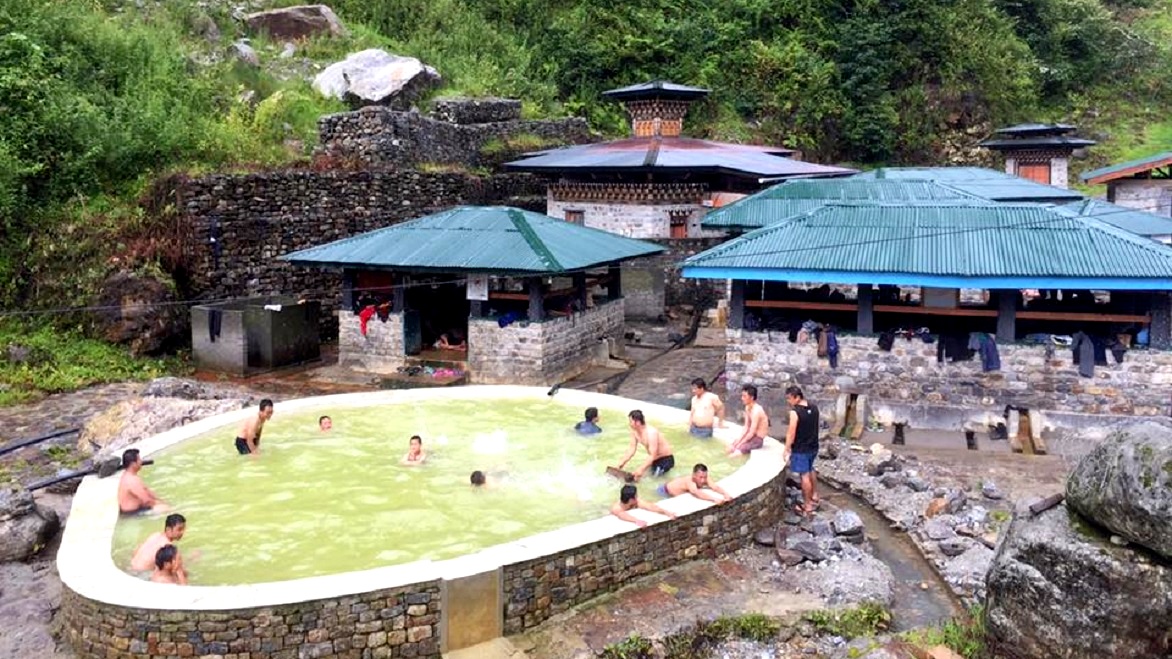
Location and Accessibility: The Gasa Tshachu is located near the banks of the Mo Chhu River, amidst the lush forests and rugged hills of northern Bhutan. Getting there involves a scenic yet adventurous journey, which includes a drive from the capital city, Thimphu, to Gasa, followed by a short trek. The trek to the hot springs allows visitors to immerse themselves in the beauty of Bhutan's untouched natural landscapes, making the journey as rewarding as the destination itself.
Experience: Visitors to the Gasa Hot Springs can look forward to a tranquil and rejuvenating experience. There are several pools of varying temperatures, allowing bathers to find the perfect spot for relaxation. The setting is rustic and serene, with the hot springs bordered by traditional stone bathhouses. These communal bathhouses offer a unique opportunity to experience Bhutanese culture and hospitality firsthand.
Best Time to Visit: The best time to visit the Gasa Hot Springs is during the autumn and spring months when the weather is pleasant, and the journey to the springs is less challenging. Winter visits are also popular, as the warm waters provide a stark contrast to the chilly air, though travelers should be prepared for colder trekking conditions.
Conservation Efforts: The Bhutanese government and local communities place a strong emphasis on preserving the natural and cultural heritage of the hot springs. Visitors are encouraged to respect the environment and the sanctity of the site, adhering to guidelines that ensure the sustainability of this precious natural resource for future generations.
The Hot Springs of Gasa offers a unique blend of natural beauty, cultural significance, and therapeutic benefits, making them a must-visit destination for those exploring the hidden gems of Bhutan. Whether seeking adventure, wellness, or a peaceful retreat into nature, the Gasa Tshachu promises an unforgettable experience in the heart of the Himalayas.
Best Time of the year to visit in Bhutan
Visiting Bhutan offers a unique experience throughout the year, with each season presenting its own set of attractions and events. However, the best time to visit largely depends on what you want to do and see. Bhutan's diverse climate zones, from subtropical in the south to temperate in the highlands and polar-type in the north, influence the ideal times for travel. Here's a seasonal guide to help you plan your trip:
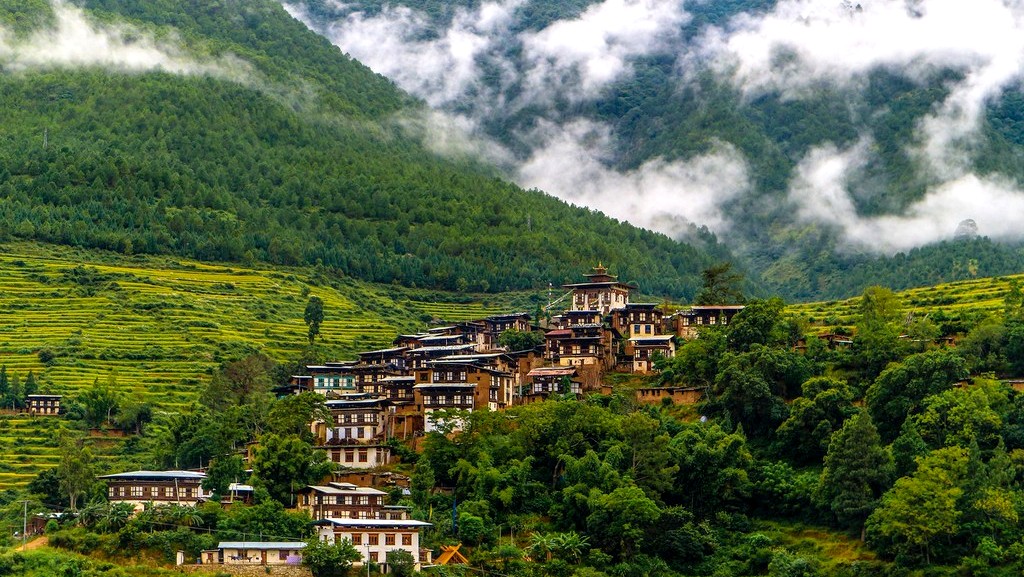
Spring (March to May)
- Weather: Mild and pleasant with daytime temperatures ranging from 15°C to 25°C. Nights can still be cool.
- Landscape: Valleys and hillsides bloom with flowers, including vibrant rhododendrons and wildflowers, making it one of the most beautiful times to visit.
- Activities: Ideal for trekking, bird watching, and photography. The clear weather provides excellent conditions for outdoor activities.
- Festivals: Hosts some of the most famous festivals, such as the Paro Tshechu, where locals gather to celebrate with masked dances and cultural performances.
Summer (June to August)
- Weather: Marked by the monsoon, this season brings heavy rainfall, especially in the southern region, leading to lush landscapes but potentially challenging travel conditions.
- Landscape: The country is at its most verdant, with rivers and waterfalls swollen with rainwater, offering a picturesque view of Bhutan's natural beauty.
- Activities: While trekking can be difficult due to rain, it's a good time for indoor cultural tours, visiting museums, and enjoying the serenity of monasteries.
- Festivals: Fewer festivals due to the rains, but some local celebrations and rituals take place, reflecting the deep cultural roots of Bhutanese society.
Autumn (September to November)
- Weather: Characterized by clear, sunny days with crisp air, and temperatures ranging from 10°C to 20°C, making it comfortable for all kinds of activities.
- Landscape: The monsoon leaves behind a refreshed and vibrant environment, with clear views of the Himalayan peaks.
- Activities: Considered the best season for trekking, thanks to the stable weather and excellent visibility. Also, a great time for photography and enjoying the natural beauty.
- Festivals: Autumn is rich in cultural festivities, including the Thimphu Tshechu and the Jambay Lhakhang Drup, offering visitors a glimpse into Bhutan's spiritual and communal life.
Winter (December to February)
- Weather: Cold, especially in the mountains, with temperatures dropping below freezing in the higher altitudes. However, the lower regions remain relatively mild and pleasant.
- Landscape: The north may see snow, offering stunning winter landscapes, while the south remains green and relatively warm.
- Activities: Ideal for cultural tours in the lower valleys and wildlife spotting, as the cooler weather brings animals to lower altitudes. Also, a great time to see the endangered black-necked cranes in the Phobjikha Valley.
- Festivals: Fewer than in other seasons, but the Punakha Drubchen and Tshechu take place, celebrating Bhutan's rich history and tradition.
Ultimately, the best time to visit Bhutan depends on your interests:
- For trekking and outdoor activities: Spring (March-May) and Autumn (September-November) are ideal.
- For cultural experiences and festivals: Spring and Autumn also offer numerous traditional festivals.
- For a quieter experience with fewer tourists: Consider the monsoon season (June-August) or winter (December-February).
Each season in Bhutan brings its charm and challenges, allowing visitors to choose their travel time based on the experiences they wish to have, from vibrant festivals and blooming valleys to serene landscapes and rich cultural encounters.
Things to know before visiting Bhutan
Visiting Bhutan, the Land of the Thunder Dragon, is a unique experience, offering insights into a culture that has been preserved through the ages. Here are some essential things to know before you plan your trip:
- Tourist Tariff and Minimum Daily Package: Bhutan has a unique tourism policy to protect its culture and environment, requiring all tourists (except citizens of India, Bangladesh, and the Maldives) to pay a minimum daily package rate. This rate covers accommodation, transportation, a guide, food, and entrance fees. Part of this fee is used for free education, healthcare, and poverty alleviation.
- Travel with a Licensed Bhutanese Tour Operator: All international tourists must book their trip through a licensed Bhutanese tour operator or one of their international partners. Independent travel is not allowed, except for citizens of India, Bangladesh, and the Maldives.
- Restricted Entry: Entry into Bhutan is only possible through its land border with India or by air. The country's national airlines, Druk Air, and Bhutan Airlines operate flights from a limited number of countries.
- Visa Requirements: With the exception of visitors from India, Bangladesh, and the Maldives, all tourists need a visa to enter Bhutan. Your tour operator will apply for your visa, which is issued upon receiving the full tour payment. Visas are approved by the government around 2 weeks before the date of arrival.
- Dress Code and Etiquette: Bhutan has a strict dress code, especially when visiting religious sites. Men are required to wear long trousers and women should wear long skirts or pants. Showing respect to the local culture and traditions is essential, including removing your shoes before entering temples and monasteries.
- No Smoking in Public Places: Bhutan is the first country in the world to ban tobacco sales and smoking in public places. While you can bring cigarettes for personal use, you will need to pay a 200% tax upon arrival, and you can only smoke in designated smoking areas.
- Currency and Payments: The Bhutanese currency is the Ngultrum (BTN), which is pegged to the Indian Rupee. Credit cards are accepted in major hotels, shops, and restaurants, but it's advisable to carry some cash, especially when traveling to smaller towns and rural areas.
- Limited Internet Connectivity: While major towns have internet cafes and Wi-Fi is available in most hotels, connectivity can be slow and unreliable, especially in remote areas. This offers a great opportunity to disconnect and immerse yourself in the natural beauty and culture of Bhutan.
- Sustainable Travel: Bhutan is known for its strong commitment to environmental conservation and sustainability. Visitors are encouraged to respect the environment, minimize waste, and follow local conservation laws and guidelines.
- Cultural Sensitivity: Bhutanese people are deeply religious and take pride in their cultural traditions. Showing respect towards their customs, religion, and the royal family is crucial. Always ask for permission before taking photos of people or religious sites.
Understanding these points before visiting Bhutan can enhance your travel experience, ensuring that you enjoy the country's unique culture and natural beauty responsibly and respectfully.
Bhutan stands as a beacon of untouched beauty and cultural richness, offering a plethora of hidden gems waiting to be explored by those yearning for an adventure off the beaten path. From the serene valleys of Haa and Phobjikha to the mystical ambiance of Bumthang and Lhuentse, each destination within this Himalayan kingdom tells a story of tradition, spirituality, and natural wonder. Whether you're trekking through the lush landscapes of Jigme Dorji National Park, soaking in the hot springs of Gasa, or experiencing the unique lifestyle of the communities in Merak and Sakteng, Bhutan promises an unparalleled journey. The best times to visit—spring and autumn—reveal the country's scenic beauty and vibrant festivals, inviting travelers to immerse themselves in its serene environment and rich cultural tapestry. With considerations for sustainable travel and respect for local customs, a journey to Bhutan becomes not just a visit to a foreign land but an enriching experience that touches the soul. Bhutan's commitment to preserving its environmental sanctity and cultural heritage makes every visit a contribution to this noble cause, ensuring that the kingdom remains a pristine paradise for generations to come.
FAQs of Explore the Hidden Gems of Bhutan: Off-the-Beaten-Path Destination
Q. Do I need a visa to visit Bhutan?
A. Yes, all international tourists require a visa to visit Bhutan, except for citizens of India, Bangladesh, and the Maldives. Your visa must be arranged by a licensed Bhutanese tour operator and is typically processed after your travel package has been paid in full.
Q. How can I travel to Bhutan?
A. International tourists can enter Bhutan by air through Paro International Airport, which is connected to select cities in Asia, or by land through the border with India. All travel arrangements must be made through a licensed Bhutanese tour operator.
Q. What is the best time to visit Bhutan?
A. The best times to visit Bhutan are during the spring (March to May) and autumn (September to November) months. These periods offer pleasant weather, clear skies, and the opportunity to witness many of Bhutan's colorful festivals.
Q. Is independent travel allowed in Bhutan?
A. No, Bhutan does not allow independent travel for most international tourists. You must book your trip through a licensed Bhutanese tour operator, which includes a guide, driver, accommodations, and meals.
Q. What should I pack for a trip to Bhutan?
A. Pack clothes suitable for layering, as temperatures can vary significantly between day and night. Include warm clothing, especially if visiting during the cooler months or planning to trek. Don't forget to pack sturdy walking shoes, a hat, sunglasses, sunscreen, and a camera. Also, bring formal attire for visiting religious sites.
Q. Are there any specific health precautions I should take before visiting Bhutan?
A. While there are no mandatory vaccinations for Bhutan, it's advisable to consult with a healthcare provider for recommendations based on your health status and travel plans. Consider vaccinations for hepatitis A, typhoid, and tetanus. Also, prepare for altitude changes if you plan to trek.
Q. How much does it cost to visit Bhutan?
A. Bhutan has a minimum daily package rate that varies by season, ranging from $200 to $250 per person per night for a group of three or more. This rate covers accommodations, food, transportation within Bhutan, a guide, and entry fees. Additional costs include your visa fee and any personal expenses.
Q. Can I use my mobile phone and access the internet in Bhutan?
A. Mobile phone coverage is generally good in urban areas, but connectivity can be limited in remote regions. Internet access is available in hotels and internet cafes in major towns, though speeds may be slower than you're accustomed to.
Q. What is the currency in Bhutan, and can I use credit cards?
A. The currency of Bhutan is the Ngultrum (BTN). Credit cards are increasingly accepted in hotels, restaurants, and some shops, particularly in Thimphu and Paro, but cash is preferred in smaller towns and rural areas.
Q. How do I respect local customs and traditions while visiting Bhutan?
A. Dress modestly, especially when visiting religious sites. Always ask permission before taking photographs of people or religious objects. Learn a few basic phrases in Dzongkha to show respect for the local culture. Be mindful of Bhutan's environmental policies and efforts towards sustainability.


